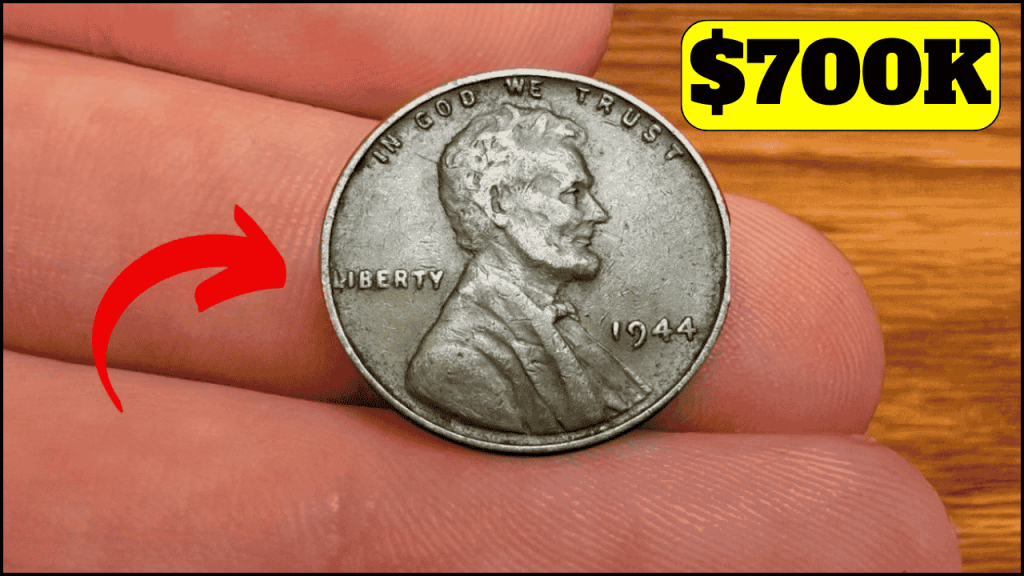
Imagine reaching into your coin jar and discovering a penny that could be worth a staggering $700,000. While it sounds like a dream, this scenario isn’t as far-fetched as it seems. Coin collectors across the country are buzzing about a specific version of the Lincoln Wheat Penny that has fetched such a jaw-dropping price at auction. Even more exciting — experts believe there are still a few of these rare coins floating around in everyday circulation.
So, what makes this little piece of copper (or rather, bronze) so valuable? Let’s dive into the history, the key features of the coin, and how you can tell if you might have struck gold — or rather, bronze — with your spare change.
A Look Back: What Is the Lincoln Wheat Penny?
First introduced in 1909, the Lincoln Wheat Penny holds a special place in U.S. numismatic history. It was the first U.S. coin to feature the image of a real person — President Abraham Lincoln — on the front. The reverse side displayed two classic wheat stalks, which gave the coin its popular name.
These pennies were minted until 1958, and most of them, even today, are common and only worth slightly more than face value. However, a few versions, due to rare minting errors or limited production, have become the holy grails of coin collecting. Among these, one particular coin stands out — the 1943-S bronze Lincoln Wheat Penny.
Why the 1943-S Bronze Penny Is So Special?
During World War II, copper was in high demand for military purposes. To conserve the metal, the U.S. Mint temporarily switched from copper to zinc-coated steel for producing pennies in 1943. These “steel cents” are quite common and can still be found today.
However, a rare mistake occurred at the San Francisco Mint — a few leftover bronze planchets (the blank discs used to make coins) were mistakenly used in place of the steel blanks. As a result, a tiny number of 1943-S bronze Wheat Pennies were created. It’s believed that only a handful of these coins ever made it into circulation, making them one of the most coveted and valuable coins in American history.
In fact, one of these pennies was sold at auction for $700,000, and experts believe that others might still be out there, hiding in old piggy banks, coin jars, or forgotten collections.
The Lincoln Wheat Penny Valued at $800K, Still Found in Circulation
The Lincoln Wheat Penny Valued at $1.5 Million, Still Found in Circulation
$2 Bills Are Worth Thousands, Check for These Rare and Valuable Notes
Rare Bicentennial Quarter Worth Nearly $201K – Plus 6 More Coins Valued Over $25K Each
5 Rare Bicentennial Quarters Worth $2.5 Million – Fact vs. Fiction, Could Your Coin Be Valuable?
How to Spot the $700,000 Penny?
Curious to know if you might have one of these ultra-rare coins in your possession? Here are the specific characteristics to look for:
1. The Date and Mint Mark
The coin should be dated 1943, and it must include an “S” mint mark just below the year. This indicates it was minted in San Francisco.
2. The Color
Unlike the usual grayish appearance of the 1943 steel pennies, the rare bronze version will look brown or copper-toned. If your 1943 penny looks like older copper pennies rather than the shiny silver ones from that year, it might be a good sign.
3. Magnet Test
A quick and simple test: grab a magnet. Steel pennies will stick to a magnet, while bronze ones will not. If your 1943-S penny doesn’t stick, you’re one step closer to holding a rare treasure.
4. Weight Check
Steel pennies weigh about 2.7 grams, while the bronze version is slightly heavier at 3.11 grams. Use a digital scale with high accuracy to verify the weight. If your coin falls within the bronze range, it’s time to dig deeper.
If your coin meets all these criteria, it’s wise to have it examined by a professional coin grading service like PCGS (Professional Coin Grading Service) or NGC (Numismatic Guaranty Corporation). These organizations can authenticate the coin, determine its grade, and provide an estimated market value.
Could It Really Still Be in Circulation?
The answer is a resounding yes. Over the years, some of these ultra-rare pennies have surfaced in the most unexpected places — tucked away in old cigar boxes, hidden among inherited coin collections, or casually spent and saved as spare change. With so many coins from the 1940s still floating around, it’s entirely possible that another 1943-S bronze penny is sitting unnoticed in someone’s drawer.
Why This Coin Is More Than Just Money?
While the massive price tag of $700,000 grabs headlines, the true value of the 1943-S bronze Lincoln Wheat Penny goes beyond its monetary worth. This tiny piece of metal represents a unique moment in American history. It’s a tangible result of wartime resourcefulness, human error, and numismatic intrigue.
Every coin tells a story — and in this case, it’s the story of how a small minting oversight led to one of the most remarkable treasures in coin collecting. It reminds us that even everyday items can become priceless over time.
Final Words
Whether you’re a passionate coin collector or someone who simply tosses spare change into a jar, the tale of the 1943-S bronze Lincoln Wheat Penny is a compelling reminder that treasure can come in the smallest of forms. With only a few known to exist and a value soaring into six figures, this coin is a modern-day legend — and who knows? The next one might be in your pocket right now.